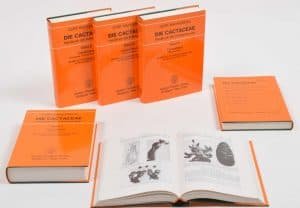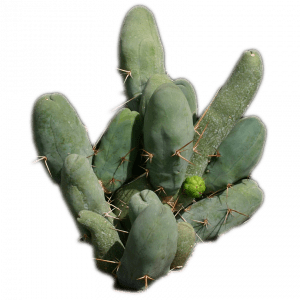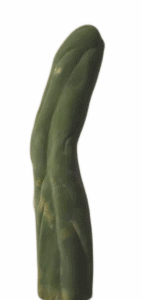The rise of the penis cactus
Phallic shapes are all over the psychedelic world. From fungi to cacti, various specimens fall under the scope of carnal-shaped objects. Some even inherited like-wise names amongst the society, birthing species such as the Penis-Envy strain and the Penis cactus, also referred to as Frauenglück in German literature, which translates to “Women’s luck”. (Trichocereus Bridgesii f.mostruosa shortened to TBM)
The species Trichocereus bridgesii was firstly reported by Joseph Zu Salm-Reifferscheidt-Dyck in 1850, in La Paz Bolivia where the cactus is considered sacred, has the name of Cactus of the four winds (Achuma or Wachuma) due to its four ribs and is used by Shamans as a substitute of San Pedro (Echinopsis Pachanoii) for containing the same alkaloid Mescaline. At first, Dyck named the species Cereus bridgesii, this nomenclature would then be adapted to Trichocereus Bridgsii by Britton & Rose in 1920, however, the cactus is often mentioned as Echinopsis Langiformis, a name attributed by H.Friedrich & G.D.Rowley in 1974.
The four winds
The four winds correspond to the four cardinal points in a compass, meanwhile, the four roads are positioned diagonally in the mesa (table where various artifacts are placed during the healing process) of the shaman. What consists of the mesa is interchangeable depending on the Shamans’ beliefs, region, and knowledge passed from their teacher.
The east is considered to be a positive direction, since the sun rises in the east, starting a new day, and often is seen as a direction for rebirth. On the other hand, the west is interpreted as negative, as it’s the region where the sun is swallowed by the sea, which often is seen as death.
North considered the direction of power or magnetism due to the location of the Equator and the North Pole. Meanwhile, the south is a contrast to the north. Consequently a contrast in the sense of power.
Display of the Mesa of Eduardo the healer described in the book Wizard of the Four Winds by Douglas Sharon.
WEST (Death)
Mediators, Shimbe Lagoon Stone, St. Cyprian, Fortune Stone, Virgin’s Breast Stone ,Death (Witchcraft),.
Human Eye Stone, Heart Stone, Kidney Stone, Phallus Stone, Double-Eyed Stone, Knee Stone, Woman’s Heel Stone, Man’s Foot Ceramic, Bound Humans Stone
Animal Snake Stone, Deer Foot, Monkey Ceramic, Black Parrot Stone, Black Guinea Pig Stone, Vampire Bat Ceramic,Fox Ceramic
Crops: Wheat Stone, Bound Corn Stone
East (Rebirth)
Rebirth (Ascension) Christ Enthroned Statue, St. John (Baptist) Shell, Birth of Jesus Stone, Moses & Red Sea Stone, Jacob’s Crystal, Noah’s Ark Crystal, Chalpón Cave Stone, Snake Eye Crystal, White Ray Crystals (Defense also), Curer’s Shell.
Purification: Purification Bowl, Holy Water, Red Perfume, Scented Water, Tabu, White Sugar, Sweet Lime, Black Tobacco
Defense: (White Ray Crystals)
NORTH (Power)
Antennae Staffs, Catalyst, San Pedro, Maiden Stone, Malden Ceramic, Maiden Staff
Natural Elements Bronze Sunburst, Bronze Sun Disk, Sea & Winds Stone, Alter Ego, Mediator Herb Jar,
Animals (Staffs): Serpent, Swordfish, Eagle, Greyhound, Hummingbird, Owl and Stone
Christian Personages: Virgin, Immaculate, Virgin of Carmen Statue, Conception Statue, Virgin Fountain Shell, (Virgin of Mercy Staff, DO), Mary Magdalene, Child Jesus Statue, St. Francis Statue, St. Anthony Statue, St. Martin Statue, St. Paul Statue, Soldier Stone, Staffs: St. Paul, St. Michael, St. James
Sex Shell (Phallus)
“Charging” Patient’s Herb Jar
SOUTH (Action)
Tools: Pearl Shells, Bowl, Cup, Crystal Mirror & Cat, Amulet, Dagger, Rattle, Rope, Cigars
Sex Shell (Vulva)
Penis cactus: The origin
Although the species was reported in 1850, more was yet to come to the Trichocereus bridgesii species. Soon various genetic mutations began to be noticed amongst the species. Between them is the formulation of the mostruosa variants (TBM).
While some believe that the origin of this variation is merely natural selection or caused by environmental variations, some believe that the currently available specimens belong to a long lineage of seeds collected by Curt Backberg. This theory was backed up by Curt Backberg himself in his book Die Cactaceae, where he claimed that one of the two clones present in the species had been collected by himself.

Image provided by Zwiggelaar Auctions
Regardless of being backed up by the author, this theory remains incognito as the majority of the growers have never witnessed the flowering of the mostruosa variation.
Another stable explanation of the occurrence is a phenomenon named phototropism. When plant growth is manipulated by light, in order to reproduce. Such events can be seen in species such as Cephalocereus Senillis which evolved into distinctive shapes to reproduce during pollination.
Penis cactus: Clone A / Clone B
Distinguishing the differences between clones is usually an easy task. Clone A usually has 2 to 5 ribs, unlike Clone B produces strong spines that are visible even in small pups, each pup can produce its own pups when its growth is terminated at approximately 8 to 15 cm.

Image courtesy of cactus-art.biz
Normally, Clone B grows like a classic columnar cactus and produces spines rarely, has a glaucous green color, and 2 to 4 flat ribs.

Penis cactus: The rise in popularity
Despite Trichocereus Bridgesii being considered sacred and a healing tool by Shamans in Bolivia, its mostruosa variety species was never too popular, mainly due to how rare this variation is. In addition, the species can’t be found in the wild, and can only be grown via nursery-produced cultivar, thus increasing the rarity of this specimen.
Many spent infinite hours trying to get their hands on these cacti, including many in the psychedelic community, including the psychedelic researcher and collector Alexander Shulgin.
Today with internet service and social media the cactus gained some traction due to its unusual shape, became easier for collectors to find the species, and for some, it became somewhat of a gag to own the phallic-shaped cactus.

